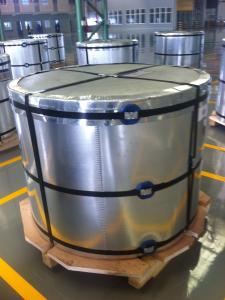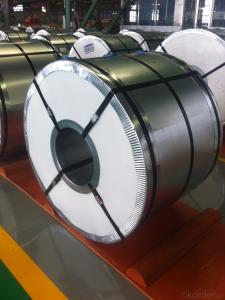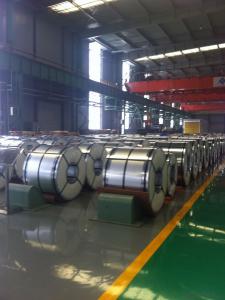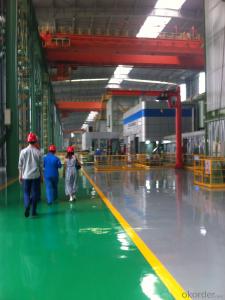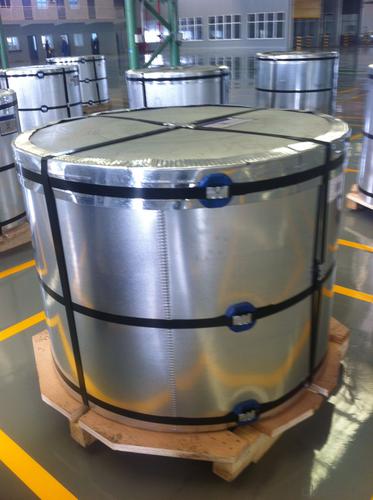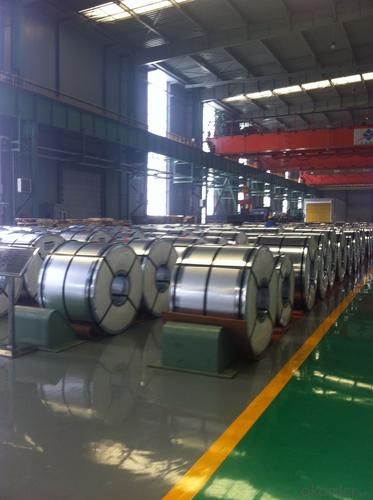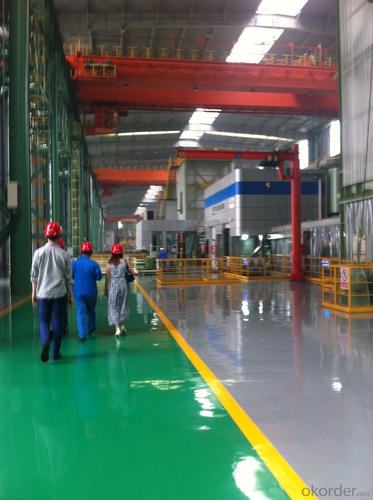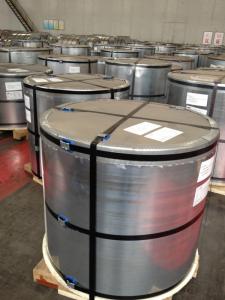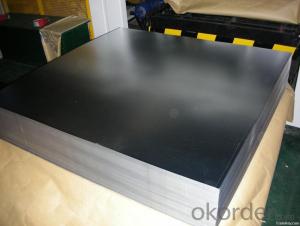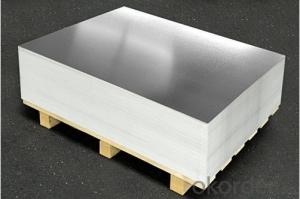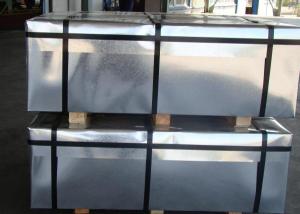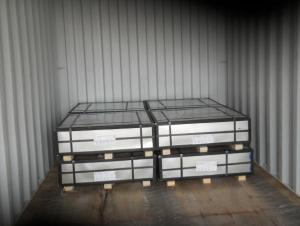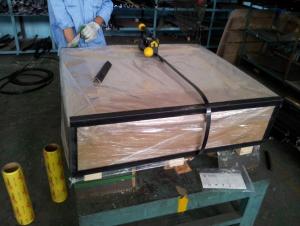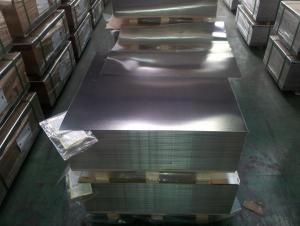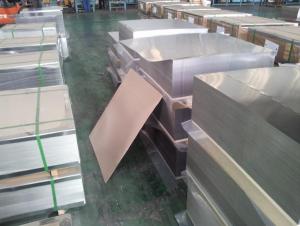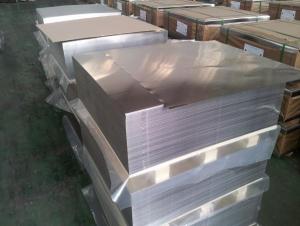Prime Quality Tinplate Sheets for 0.18mm
- Loading Port:
- Tianjin
- Payment Terms:
- TT OR LC
- Min Order Qty:
- 25 m.t.
- Supply Capability:
- 5000 m.t./month
OKorder Service Pledge
OKorder Financial Service
You Might Also Like
1.Structure Description
Electrolytic Tinplate Sheets is one of the metal packing materials, which is widely used for making painting cans ,chemical package cans , electrical cable ,battery and metal printing etc.
2. Main Features
Steady and high quality
Fast shipment
Good experience for export work
For the surface, Plate uniform in thickness,uniform and smooth tin coating, without flaws,rusts,scratch,wave,nick of tin coating etc.
Price competitive
3.Images
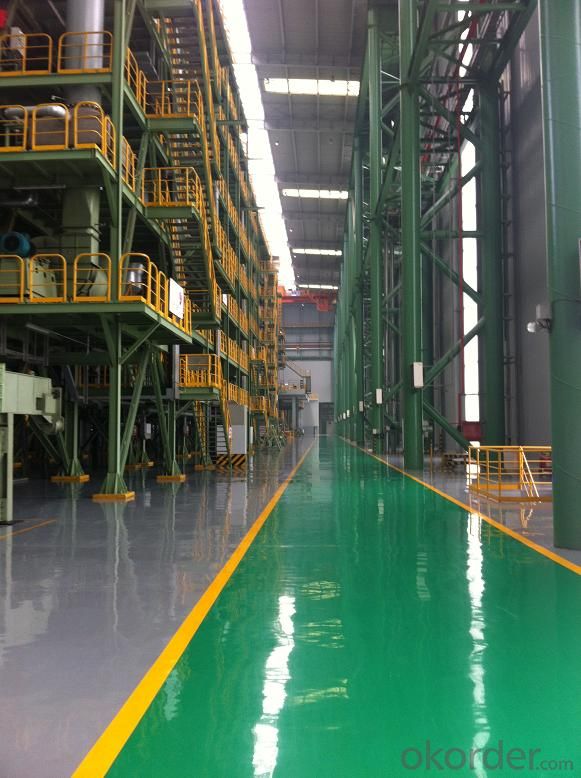
4. Specification
Standard : GB2520-2000 ,JIS G3303
Steel type : SPCC,MR
Coating : 2.8/2.8
Surface: Bright, Stone ,
Thickness:0.18
Width :600MM~1000MM
Temper : T1~T5,DR8
Package: tinplate wrapped completely with an inner cover of plastic or waterproof papers with vorners protected with metal angels.
5.FAQ
A. What is the package of tinplate? (Referred as below)
For sheets, thin plastic film + rust-proof paper + metallic cover + metallic angles+ steel band strips + fumigated wooden pallet.
For coil, thin plastic film + rust proof paper + metallic cover + steel band strips + fumigated wooden pallet
B. The surface of tinplate could you supply?
Stone finish, Bright finish, Matte finish, Silver finish
C. What quantity is the minimum order of tinplate?
Usually, the minimum quantity is 25MT. For special case, consult with us.
D. Can it make to be BA or CA for annealing?
Yes, both can do with.
E.Do you have other tin coating?
Yes, we can do with E2.8/2.8, E5.6/5.6,D2.8/5.6 etc.
- Q: Can tinplate be used for automotive components?
- Yes, tinplate can be used for automotive components. Tinplate is a type of steel coated with a thin layer of tin, which provides excellent corrosion resistance and durability. Automotive components such as fuel tanks, exhaust systems, and body panels can be made from tinplate due to its strength, formability, and resistance to rust.
- Q: How does tinplate compare to glass packaging?
- Tinplate packaging offers several advantages over glass packaging. Firstly, tinplate is lightweight and durable, making it easier and safer to transport. Additionally, tinplate is less prone to breakage, reducing the risk of product damage during handling or shipping. Tinplate also provides better protection against moisture, oxygen, and light, ensuring longer shelf life for packaged products. Moreover, tinplate is more cost-effective and environmentally friendly, as it is recyclable. Overall, tinplate packaging offers superior functionality, convenience, and sustainability compared to glass packaging.
- Q: What are the main trends in tinplate packaging?
- Some of the main trends in tinplate packaging include the increasing demand for sustainable and eco-friendly packaging solutions, the rise of convenient and innovative packaging designs, and the incorporation of advanced technologies for improved product protection and preservation. Additionally, there is a growing preference for personalized and customized tinplate packaging to enhance brand identity and consumer engagement.
- Q: Is to buy canned tinplate or aluminum
- Buy tinplate, aluminum toxic, not good
- Q: What are the advantages of using tinplate for signage?
- There are several advantages of using tinplate for signage. Firstly, tinplate is highly durable and resistant to corrosion, ensuring that the signage can withstand various weather conditions and maintain its quality over time. Additionally, tinplate is lightweight, making it easier to install and transport. It also offers excellent printability, allowing for vibrant and long-lasting graphics on the signage. Moreover, tinplate is a sustainable material as it is 100% recyclable, making it an environmentally friendly choice. Overall, the advantages of using tinplate for signage include durability, corrosion resistance, lightweight nature, excellent printability, and sustainability.
- Q: What is the cost of tinplate compared to other packaging materials?
- The cost of tinplate can vary depending on factors such as market conditions and quantity purchased. However, compared to other packaging materials such as aluminum or plastic, tinplate tends to be relatively more expensive.
- Q: What are the main factors affecting tinplate coil surface quality?
- The main factors affecting tinplate coil surface quality include the quality of the base metal used, the cleanliness of the production environment, the effectiveness of the cleaning and coating processes, the temperature and speed of the production line, and the skill and experience of the operators.
- Q: Can you tell me how to deal with the recycling of tinplate?
- The tin is magnetic, is easy to recycle scrap. Second, waste tin as scrap iron and steel melted, make steel containing a small amount of tin (less than 0.1%), to improve the performance of cast iron.
- Q: What are the different ways to recycle tinplate packaging?
- There are several different ways to recycle tinplate packaging. One common method is to separate the tinplate from other materials, such as paper or plastic, and then melt it down to be used in the production of new tinplate products. Another way is to repurpose the tinplate packaging by transforming it into new and creative items, such as decorative storage containers or art pieces. Additionally, tinplate packaging can also be collected and sent to recycling facilities where it will be properly processed and recycled into various new products.
- Q: Can tinplate be easily opened and resealed?
- No, tinplate cannot be easily opened and resealed.
Send your message to us
Prime Quality Tinplate Sheets for 0.18mm
- Loading Port:
- Tianjin
- Payment Terms:
- TT OR LC
- Min Order Qty:
- 25 m.t.
- Supply Capability:
- 5000 m.t./month
OKorder Service Pledge
OKorder Financial Service
Similar products
Hot products
Hot Searches
Related keywords
